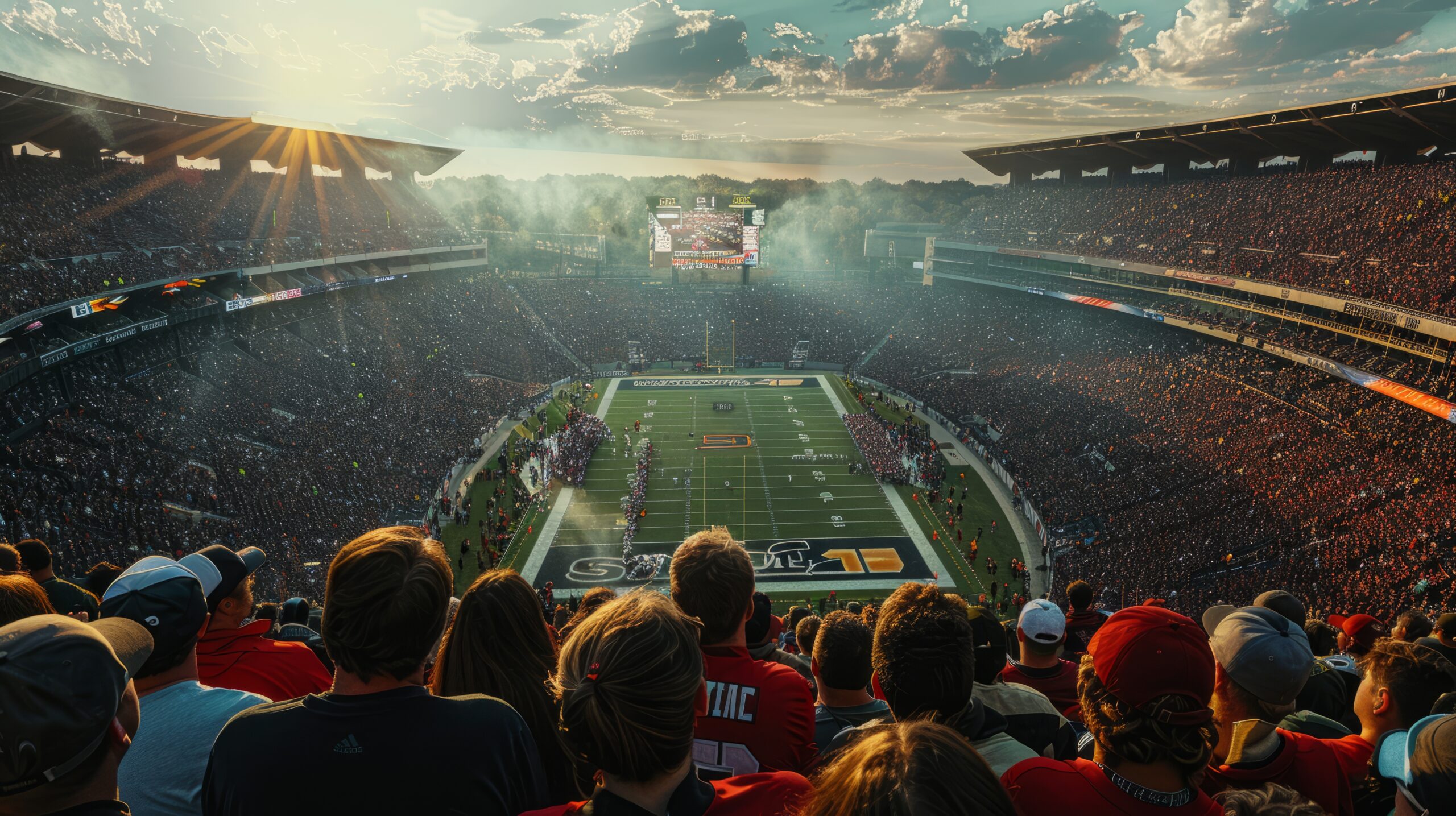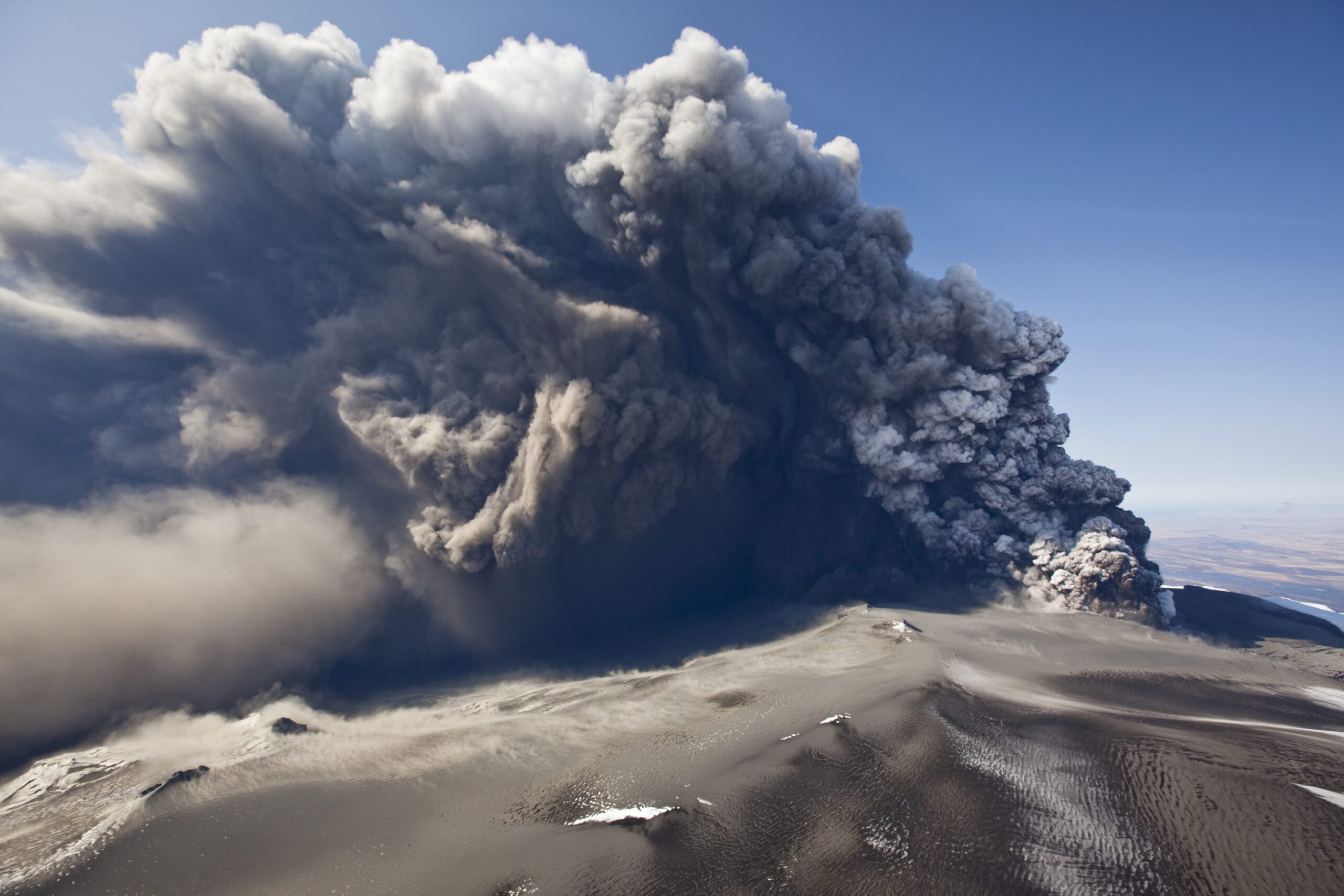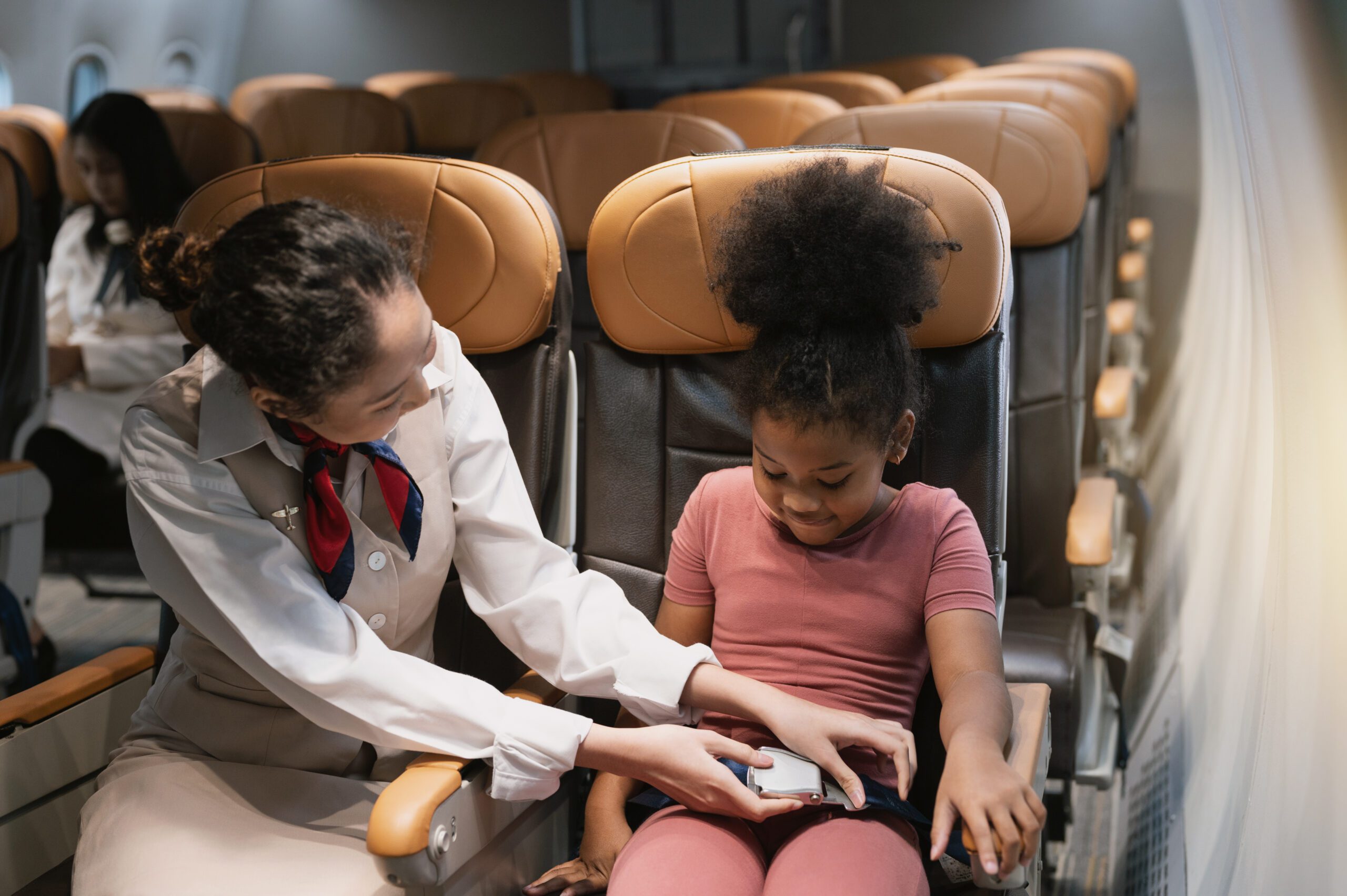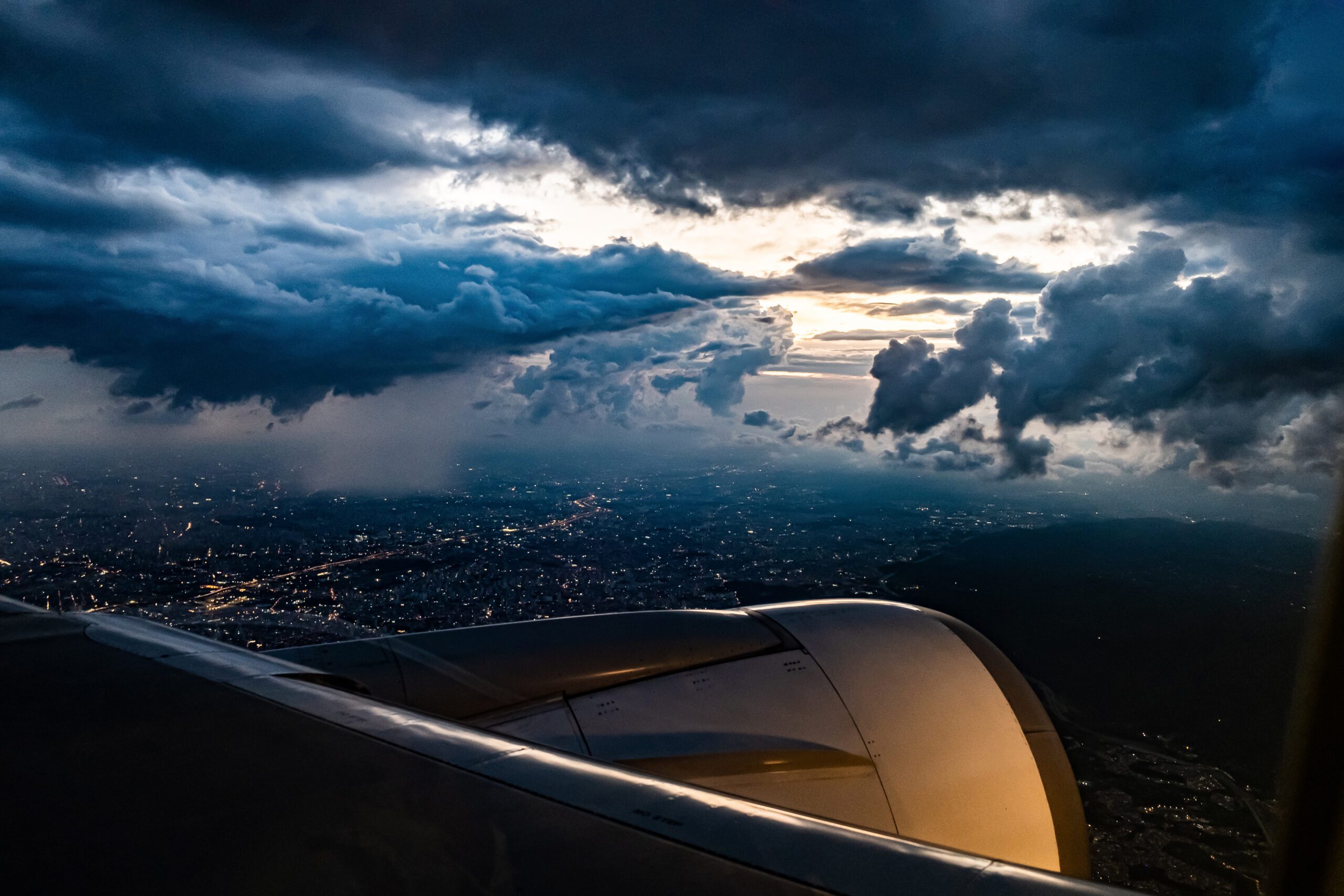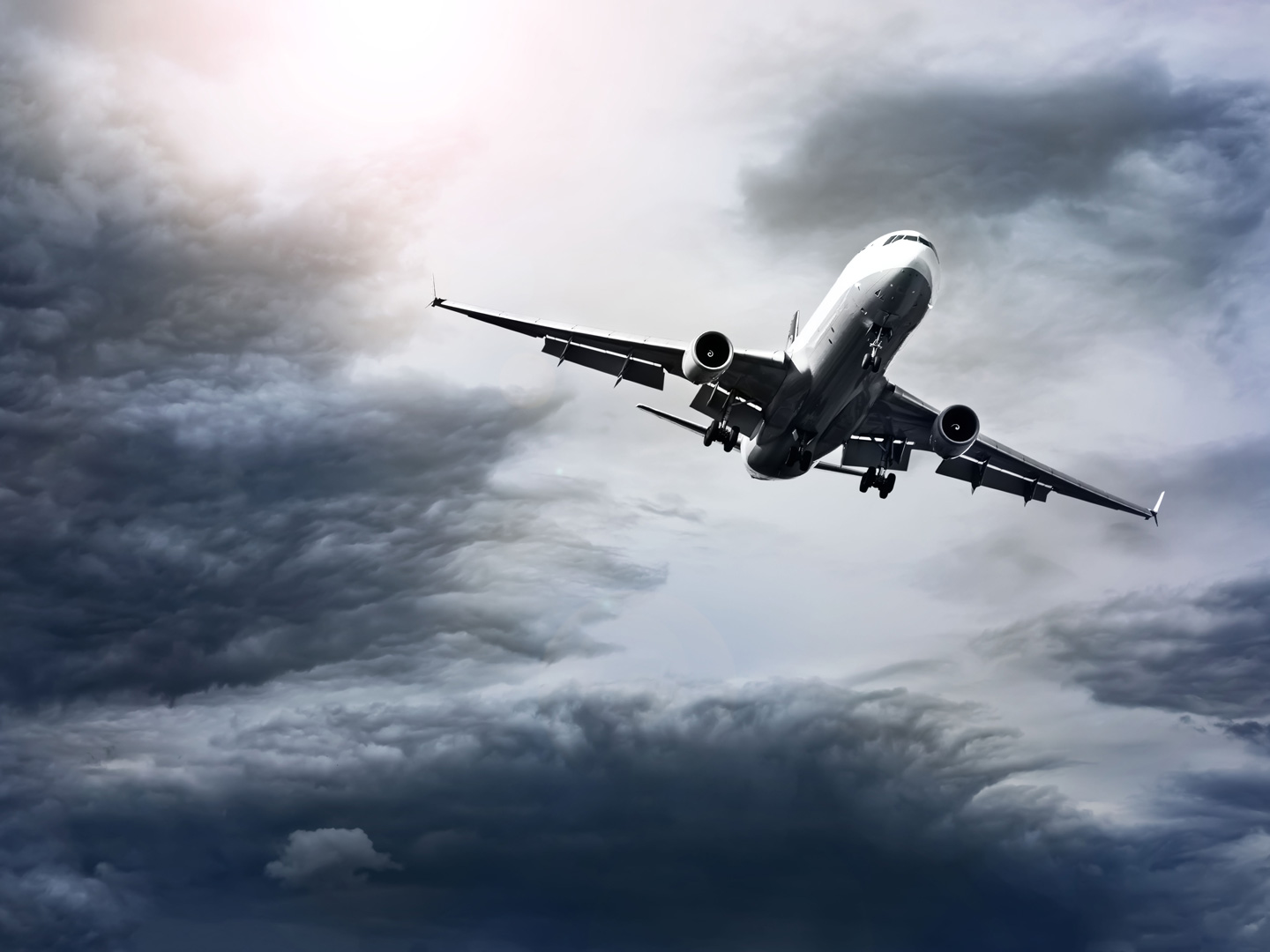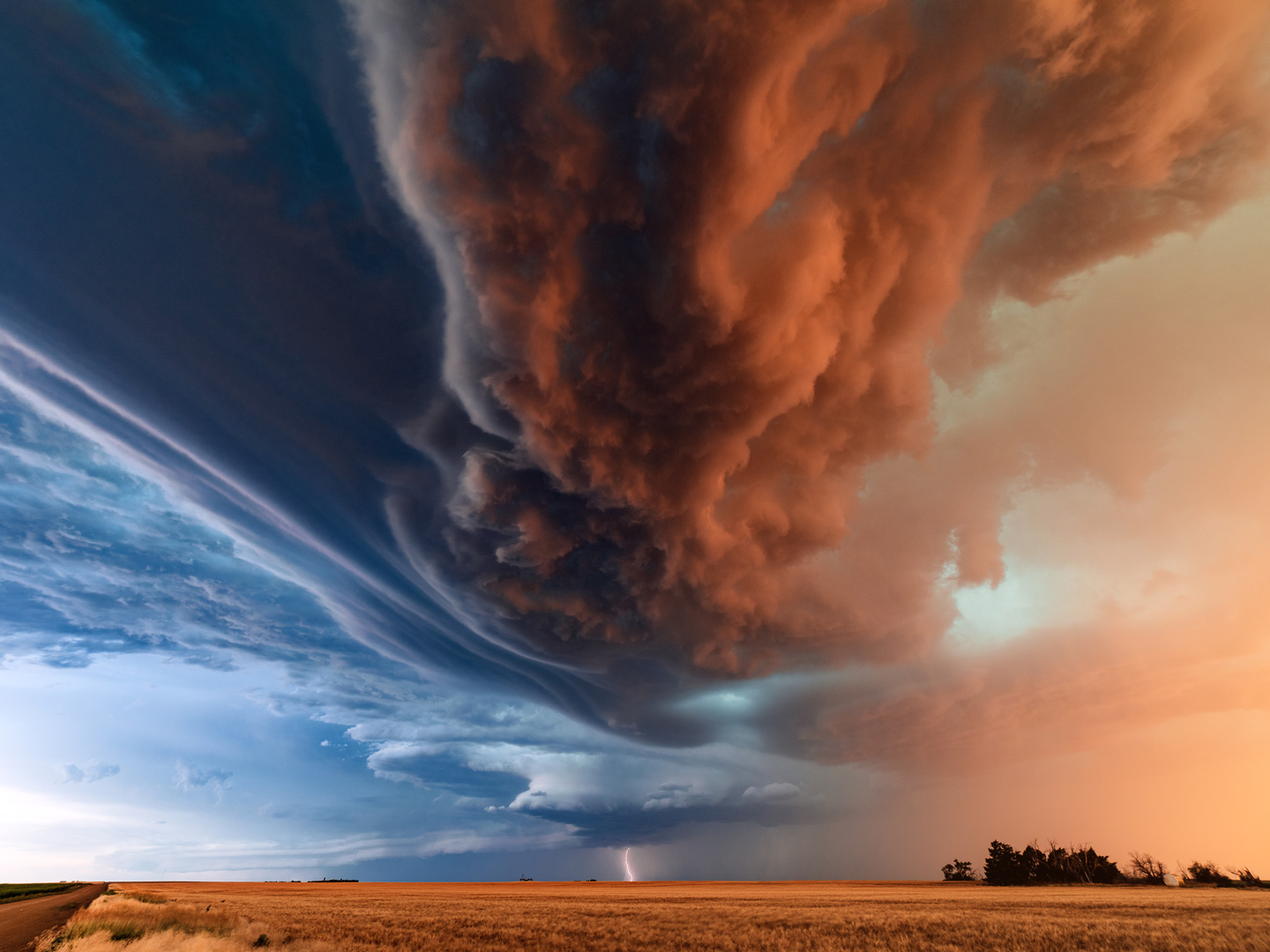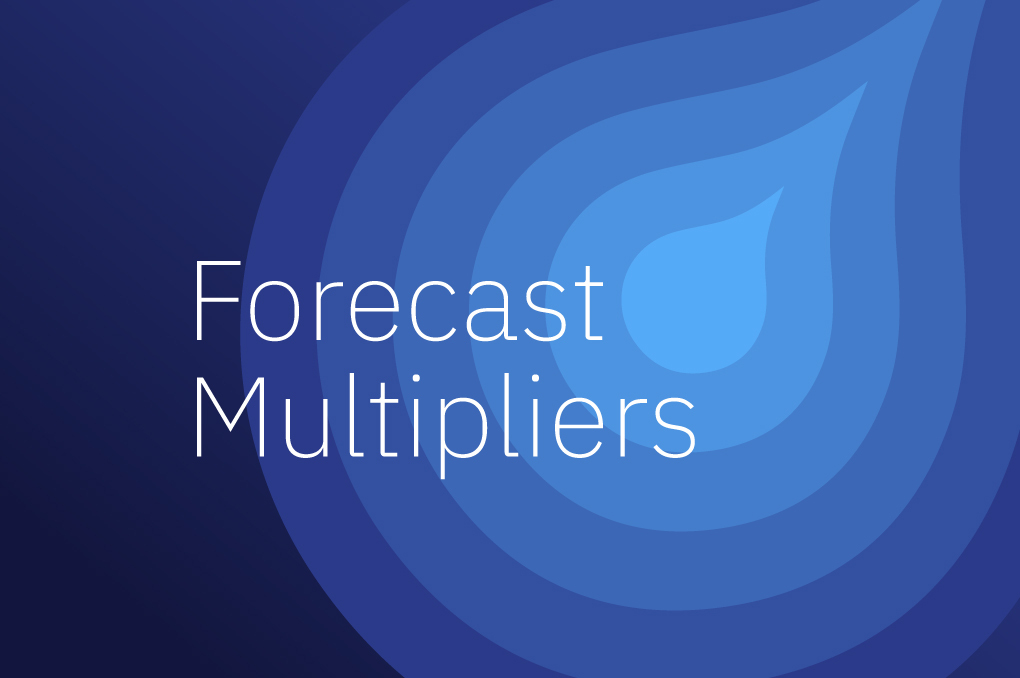Weather intelligence for the future: Crafting a strategic enterprise approach to changing environmental conditions
Continue readingLook no further than The Weather Channel’s winter 2024 outlook to discover how the season is shaping up across the country. And as those chilly temperatures arrive, so does something else: spring break weather wanderlust. For marketers, this presents a golden opportunity to showcase exactly what travelers need to turn their daydreams into reality, from short-term packing decisions to long-term destination planning.
Strike while the iron is hot, but the temperatures are not
Nearly half of consumers admit that winter weather fuels their desire to escape to warmer destinations.1 To help travel-related brands deliver real-time, personalized relevance, they can tap into weather’s proven influence on mindsets and behaviors. Bringing weather data together with impactful first and third-party datasets can enable better decisions for consumers, and a competitive edge for brands and businesses. So, when decision-making kicks in for the ultimate spring break travel adventure, we’ll help you reach consumers at the optimal time and place.
of millennials say “winter blues” is the most challenging thing about the season1
Weather impacts travelers emotionally and physically, making it a key factor for brands to consider. Because weather intelligence allows brands to reach people during specific conditions and when they are in the right mindset, marketers can use this valuable tool to influence consumer behaviors.
From choosing a beach or ski resort to deciding what to pack, the forecast plays a role throughout the entire travel journey. And let’s not forget the impact of weather on air travel — because nothing says “vacation vibes” like a surprise snowstorm canceling your flight. In fact, a recent Expedia Group report named “weather” as the top influencer of trip destinations for travelers considering multiple destinations. It’s no wonder 67% of people use The Weather Channel, the world’s most accurate forecaster, to research or plan their trips.2
Take it from Mother Nature: Real-time weather drives winning campaigns
Weather doesn’t only come into play when planning the perfect vacation during spring break, it shapes the trip itself. Nearly two-thirds of people say weather and travel conditions impact their enjoyment of a trip while more than half of travelers are open to trying new product brands during their travels.2 This means all brands can benefit from using weather data to reach those travel-savvy consumers at the right moments.
Capturing that moment when consumers are in the right mindset, at the right time, is precisely the use case for Weather Targeting’s predictive and performant capabilities driving relevancy, action, and effective messaging. For instance, when a hotel brand wanted to increase awareness and consideration of its beachfront resorts, they leveraged Weather Targeting to efficiently reach consumers when cold, wintry, and rainy weather was present in their local area. Compared to third-party cookie targeting, using Weather Targeting to engage travelers and loyalty members helped their campaign break through the clouds:
lift in brand awareness3
lift in purchase intent3
higher brand favorability3
Remember, the daily forecast isn’t just a local phenomenon; it’s universal. As the ultimate contextual signal, it influences every aspect and decision of people’s lives – consciously or not. It affects how we feel, what we do, where we go, and what we buy. In this late-winter limbo, kickstart spring travel campaigns by integrating weather targeting solutions and data into marketing plans to drive relevance, awareness, and ultimately, conversion.
Let’s talk
What’s your weather strategy? To learn more about harnessing the power of weather to increase engagement and drive growth, contact our advertising experts today.
Contact us1 The Weather Company Winter 2022-23 Behavior Survey, Sept. 2022
2 The Weather Company Travel 2022 Behavior Survey, June 2022
3 Lucid
New CEO and CFO appointed; former CEO transitions to President role overseeing Enterprise business
ATLANTA — Nov. 12, 2024 — The Weather Company, the world’s most accurate weather forecaster,1 today announced key executive leadership changes designed to accelerate growth and enhance its ability to prepare people, businesses, and communities for weather’s increasing impact.
Rohit Agarwal has been appointed as Chief Executive Officer (CEO) to lead The Weather Company into its next phase of growth. He brings extensive product and commercial experience with a proven track record of building high-performing organizations and transforming businesses. In his most recent roles, Agarwal served as Chief Product and Revenue Officer at SoundCloud and Chief Product Officer at CNN. He brings a track record of creating long-term growth and value through growing audiences and deepening engagement. Prior to SoundCloud and CNN, he held various leadership positions at companies including HSBC, Trustpilot, and AOL.
“I am honored to lead The Weather Company at this exciting time,” said Agarwal. “Weather is playing an increasingly integral role in business and people’s lives. Our goal is to strengthen our position as the most accurate weather forecaster and the most trusted news source in America2 by offering indispensable tools and experiences to give people and businesses the information and confidence they need to make better and more informed decisions. With increased investment and focus, we’re poised to deliver even greater value to people who depend on our consumer digital properties, and businesses that rely on our proprietary weather data and insights.”
In a strategic move to accelerate enterprise growth, Sheri Bachstein will transition from CEO to the role of President. In this capacity, she will lead The Weather Company’s Enterprise business, overseeing Advertising, Aviation, Media, and Government & Defense product and solutions and client portfolios.
“We see great growth potential in the Enterprise sector, and we aim to become as prevalent in this space as our The Weather Channel® brand is with consumers,” added Agarwal. “With
Sheri’s deep industry experience and relationships, she is the right leader to expand our Enterprise business and unlock its full potential.”
Alongside Agarwal, Michael Love joins The Weather Company as Chief Financial Officer (CFO), bringing a wealth of financial expertise to support the company’s growth plans. Michael previously was CFO of Intuit Mailchimp, where he was instrumental in developing and executing the company’s financial plan. Prior to Mailchimp, Michael led finance and strategy for Home Depot’s Pro business unit and served as a Principal at the Boston Consulting Group (BCG).
The Weather Company remains committed to enhancing its position as the world’s most accurate forecaster. The Weather Company combines AI, advanced weather science and technology, and human expertise to deliver unparalleled weather forecast accuracy. Its forecasts are 3x more likely to be accurate than those of its closest competitor, a testament to its decades of meteorological expertise, deep understanding of consumer behavior, and data science proficiency.1
This combination of human expertise and advanced technology is perhaps best known within its digital consumer properties – The Weather Channel app, weather.com, Weather Underground app, wunderground.com, and Storm Radar app. The Weather Channel brand connects with more than 360 million consumers wherever they are with data-driven insights that go beyond the forecast to help people make more confident decisions when planning outdoor activities and travel, as well as information on how weather affects their health and well-being.
Through its Enterprise business, which includes offerings for broadcast, media, aviation, advertising technology, and weather data and intelligence solutions for a variety of other industries, The Weather Company delivers meaningful insights to businesses increasingly affected by weather in their decision-making processes.
About The Weather Company
The Weather Company helps people and businesses around the world make more informed decisions and take action in the face of weather. With its deep industry expertise and highly accurate, high-volume weather data combined with advanced technology and AI, The Weather Company provides insights and solutions that harness the power of weather in a scalable, privacy-forward way. The world’s most accurate forecaster, the company serves hundreds of enterprise customers across media, advertising, aviation and more, and is trusted by hundreds of millions of monthly active users via digital properties from The Weather Channel (weather.com) and Weather Underground (wunderground.com). For more, visit weathercompany.com.
1 ForecastWatch, Global and Regional Weather Forecast Accuracy Overview, 2017-2022, https://forecastwatch.com/AccuracyOverview2017-2022, commissioned by The Weather Company.
2 According to a YouGov 2024 Trust in Media poll: https://today.yougov.com/politics/articles/49552-trust-in-media-2024-which-news-outlets-americans-trust The Weather Channel
was the #1 most trusted news source by Americans. The poll was conducted from 5/10/2024 through 5/17/2024, among a nationally representative sample of 2,006 U.S. adult citizens.
- The ability to forecast volcanic ash accurately is vital, as ash can lead to severe engine damage and operational disruptions in aviation.
- The Weather Company offers real-time, global volcanic ash advisory forecasts to help airlines proactively plan routes to avoid hazardous airspace.
- Advanced tools like RGB satellite imagery and webcams provide precise tracking of volcanic ash for safer flight operations.
- Impact reports from The Weather Company enhance situational awareness for airports near active volcanoes and help minimize the risk of disruptions.
- The Weather Company’s unique tools, such as the Enroute Hazards package and enhanced SIGMETs, provide airlines with advanced insights to avoid hazardous airspace and maintain safe operations.
Volcanic ash is a danger that can turn a routine flight into a risky endeavor, damaging engines, blinding pilots, grounding entire fleets, and putting passenger safety at risk. For airlines, the stakes are high, making the need for accurate forecasting inclusive of volcanic ash extremely critical. With industry-leading tools that go beyond standard advisories, such as the Enroute Hazards package and enhanced volcanic ash SIGMETs, The Weather Company’s forecast solutions provide aviation leaders with real-time insights to help outmaneuver ash clouds, keep flights on track, and greatly improve safety for passengers and crew.
The operational risks of volcanic ash

Volcanic ash can cause severe damage to aircraft engines, leading to potentially dangerous situations mid-flight. The ash particles are highly abrasive and can melt inside the engine’s combustion chambers, creating blockages that can result in engine failure. In addition to engine damage, volcanic ash can interfere with navigation systems, obstruct windshields, and drastically reduce visibility, all of which elevate the risk of flying through affected airspace.
These risks often force airlines to reroute flights, delay departures, or even cancel operations, leading to costly disruptions and logistical headaches. As ash clouds move through the atmosphere, operational leaders need precise and timely information to make quick decisions and avoid unnecessary impacts on both passengers and airline schedules.
Comprehensive forecasting for aviation safety
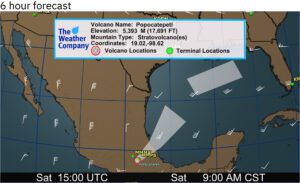
Volcanic Ash forecast Flight Plan Guidance (FPGs) display
To address these challenges, The Weather Company offers industry-leading tools, such as the Enroute Hazards package, designed to enhance volcanic ash and aviation safety for aviation customers of all sizes. Beyond the basic Volcanic Ash Advisory Center (VAAC) bulletins, our services include enhanced volcanic ash SIGMET (Significant Meteorological Information) notifications, which are triggered when ash reaches key thresholds: 6,000 feet above the summit of a volcano or 10,000 feet above ground, extending over 50 nautical miles. SIGMETs are also issued for added safety if ash is detected near customer destinations, even if it doesn’t meet these thresholds.
Real-time monitoring and advanced tools
Monitoring volcanic ash in real-time is complex, but The Weather Company offers robust tools for precise tracking. RGB satellite imagery, created using GOES-East and GOES-West satellites, offers accurate identification and monitoring of volcanic ash in the atmosphere, even in complicated weather conditions. By employing techniques like channel differencing with the ash-sensitive 8.4-micron channel, this imagery allows forecasters to confidently differentiate ash from other elements like steam or water vapor.
To further refine these forecasts, The Weather Company leverages third-party webcams to visually monitor volcanic activity in real time. These webcams provide continuous views of volcanoes like Popocatépetl in Mexico, which allow forecasters to distinguish between ash emissions and less threatening emissions like steam or gas. When combined with satellite data, this real-time monitoring enables assessments of volcanic activity, leading to better decision-making by airline operations teams.
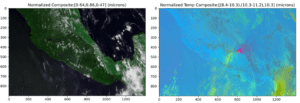
RGB imagery enhances satellite data to highlight atmospheric particulates. Using channels sensitive to volcanic ash (8.4 µm) helps forecasters identify affected areas.
Ash forecast modeling
For larger eruptions, The Weather Company uses sophisticated ash forecast modeling to predict how ash will disperse through the atmosphere. These forecasts are generated using GFS-based weather models that take into account jet streams and other atmospheric factors to predict how ash clouds will move and interact with flight paths. This type of modeling is crucial for larger eruptions where ash can linger in the atmosphere for days or even weeks, posing extended risks to aviation.
For minor ash emissions, existing patterns of ash movement support decision-making. For larger eruptions, forecasts of ash dispersion provide airlines with critical information on ash location and projected movement, helping them to plan effectively for immediate and long-term impacts.
Potential volcanic ash impact reports
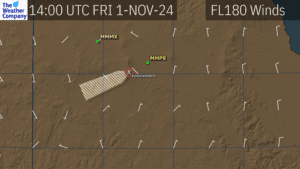
Potential Volcanic Ash Impact Report tracks daily volcanic ash movement, aiding aviation planning near active volcanoes.
Daily aviation volcanic ash reports are another critical component of our service, particularly for airports located near active volcanoes. Airports like those near Popocatépetl, Fuego, and Sangay receive continuous updates on the potential movement of ash toward key airspace and terminals. While these reports don’t predict explosive events, they do provide detailed insights into how current volcanic emissions might affect nearby operations.
These reports are invaluable for situational awareness, especially for airports that operate under the constant risk of volcanic activity. By offering advanced notice of potential ash impacts, airports and airlines can make proactive adjustments, reducing the risk of unexpected disruptions.
Human-over-the-loop reports for comprehensive insights
Navigate volcanic ash hazards with confidence using The Weather Company’s detailed Human-Over-the-Loop (HOTL) Reports. These reports compile relevant volcanic ash data into easy-to-read PDFs, featuring essential information such as SIGMETs, wind barbs, and satellite imagery. With this consolidated data, airlines gain a comprehensive understanding of the current situation, allowing for more informed decisions regarding flight safety and route planning.
The HOTL reports put all relevant information in one place, offering a comprehensive picture of volcanic activity in real time. Operational leaders can take immediate, decisive action to adjust flight operations, minimizing risks and keeping passengers and crew safe.
Staying ahead with proactive volcanic ash forecasting
Volcanic ash presents significant risks to aviation, but these challenges can be effectively managed through proactive planning and real-time insights. The Weather Company’s suite of solutions helps airlines stay ahead of disruptions, empowering decision makers to help maintain safe and efficient operations, even in volatile conditions. And, because forecasting services from The Weather Company seamlessly integrate into current operational workflows, airlines can start taking advantage of this critical technology with minimal effort.
Don’t let volcanic ash cloud your operations. Elevate your airline’s safety and efficiency with The Weather Company’s industry-leading Weather Forecast Services.
Let’s talk
To learn more about our advanced aviation weather solutions, contact our aviation experts today.
Contact usLet’s face it: Mother Nature is a consistently dynamic business partner. Retailers who underestimate her impact might be overlooking one of the most influential factors in enterprise operations. Weather isn’t just about whether customers buy an umbrella or stock up on sunscreen; it’s a force that shapes consumer behavior and operational efficiencies in ways you might not expect.
Don’t just take our word for it. According to our recent research study,1 100% of retail executives agree that weather intelligence offers a competitive edge.
Weather intelligence from The Weather Company enables retailers to create strategies that not only drive sales growth but also strengthen customer relationships. It’s about optimizing your supply chain, mitigating risks, and keeping your team safe, all while meeting consumer needs more effectively.
believe that weather intelligence is extremely valuable for their business.
say using weather insights effectively can help them be better at their job.
report that weather significantly affects their operating costs, from supply chain disruptions to inventory management and product innovation.
Key areas where weather intelligence drives business success
The impact of weather extends far beyond consumer behavior—it touches every part of the retail enterprise.
Supply chain optimization: Supply chain management is often a retailer’s toughest puzzle piece, and weather adds an extra layer of complexity. With the right data in your toolkit, you can move from reacting to weather to proactively planning for it. Weather intelligence helps businesses optimize their supply chains in crucial ways. For example, it allows you to prepare for and mitigate severe weather disruptions, minimizing delays and reducing costs. It can also influence and enable you to anticipate demand surges during favorable weather conditions. For instance, you can ensure party supplies and refreshments are ready to ship out for the first pool parties of the season. By leveraging weather data, retailers are better able to maintain steady product availability across all conditions, maximizing customer satisfaction and sales opportunities while minimizing losses from weather-related supply chain issues.
Targeted marketing and promotions: Weather data isn’t just about forecasting sunny days and stormy ones; it’s about forecasting sales, too. Retailers can craft personalized marketing strategies that align with weather conditions, boosting engagement and conversions. Imagine offering free shipping on winter apparel as a cold front approaches, or when the sun cranks up the heat, crisp and refreshing beverages take center stage on your dynamic menu board. Retailers can also use weather intelligence to tailor promotions based on how customers prefer to shop – whether it’s in-store, online, or via buy online, pick up in-store – aligning offers to anticipate customer mindsets and needs. With weather data and intelligence, you’re not just harnessing the forecast – you’re forecasting customer delight.
Retail worker safety and operational continuity: Your workforce is the backbone of your operation. They’re the unsung heroes who keep the shelves stocked, the customers smiling, and the cash registers ringing. But when Mother Nature decides to throw a curveball, their safety becomes your number one concern. With data from the world’s most accurate forecaster accurate weather forecasts, retailers can implement safety protocols to help protect on-site personnel and maintain business continuity. Proactive measures such as adjusting store hours or staffing levels based on incoming weather can help employees and customers remain safe while keeping operations running smoothly.
Retail industry trends driven by weather intelligence
Changing weather patterns increasingly influence retail trends. Using historical weather data and trend analysis, retailers can anticipate these changes and adjust their plans accordingly. For example, a trend of warmer-than-usual winters might lead a retailer to rethink product inventory levels or start end-of-season sales earlier to clear out excess stock. Notably, 82% of retail executives say that the weather’s impact on their business is just as strong, if not stronger, than five years ago, stressing the need for long-term weather strategies.
Complexity to clarity: choosing the right weather intelligence partner
What retailers really want is weather data that speaks their language – no PhD required. They’re looking for tools that can slip right into their existing workflows, providing clear, actionable insights without the headache of decoding complex data. The Weather Company solutions like Weather APIs and the Weather Engine seamlessly integrate into existing systems and processes making working with this complex and invaluable business asset a breeze.
Case study: Weather intelligence in action
A leading pharmaceutical retailer partnered with The Weather Company to analyze the impact of weather on its sales using the custom modeling approach of the Weather Engine. The results revealed a strong correlation between weather conditions and sales in specific categories, such as cosmetics, cold remedies, and allergy medications. The estimated financial impact2 includes:
- Allergies: $90M – Weather affected 15% of allergy remedy sales, translating to $90 million annually out of $0.6 billion in total sales.
- Cold remedies: $112M – Cold weather impacted 8% of cold remedy sales, which accounts for $112 million annually from $1.4 billion in sales.
- Cosmetics: $55M – Weather had a 5% effect on cosmetics sales, contributing $55 million each year from $1.1 billion in total sales.
Why weather intelligence is essential for retail growth
All retailers need to recognize this simple truth: Understanding the impact of weather on retail operations — from sales to supply chain, promotions, and customer behavior — can transform challenges into powerful growth opportunities. Predicting these shifts may seem complex, but it becomes straightforward with the correct partner. As the world’s most accurate forecaster,3 The Weather Company provides hyperlocal, AI-powered insights that help you not only react to, but anticipate, market conditions. So, while your competitors are caught with their umbrellas down, you’ll be making Mother Nature your business ally.
See how executives across industries are leveraging weather intelligence. Get your free copy of the complete Weather Means Business report.
Let’s talk
What’s your weather strategy? To learn more about harnessing the power of weather to increase engagement and drive growth, contact our advertising experts today.
Contact us1 All data sourced from the Weather Means Business report, June 2024, Magid for The Weather Company.
2 Analysis by The Weather Company, from proprietary weather data and retailer’s first party data, 2023
3 ForecastWatch, Global and Regional Weather Forecast Accuracy Overview, 2017-2022, commissioned by The Weather Company
Trial aims to increase mission success, reduce costs and protect lives by integrating new technology and superior data within synthetic environments
ATLANTA – Nov. 7, 2024 – As the battlefield undergoes transformation, so does the need for understanding weather’s impact. In a changing climate characterized by erratic swings in weather patterns and increased intensity of severe weather events, the reliance on accurate and reliable weather data for operational, strategic, and infrastructural decisions has never been more critical. Traditional, synthetic weather simulations fall well short when it comes to replicating real-world conditions on land, at sea, and in the air.
As part of its collaboration with SimCentric, The Weather Company will be providing integrated weather data, visualization and risk analytics for Exercise Talisman Sabre 2025. Exercise Talisman Sabre is the largest combined military training activity between Australia and the United States plus 23 other partner nations, and happens every other year. For the first time at a large-scale joint defense exercise, live weather data aligned to training event profiles and risk thresholds will be available to help defense training and simulation leaders improve efforts across distributed training areas and diverse exercise profiles.
While many current simulations and digital twins have used synthetic weather, The Weather Company’s Weatherverse™ solutions deliver real weather information, based upon historical, current and forecasted datasets and weather models, for use in live, virtual and constructive simulation environments at a global scale. The Weather Company uses advanced analytics to automatically detect weather-related impacts on training exercises tied to specific locations, enabling better informed insights, more confident decision making and improved outcomes.
The Weather Company’s Weatherverse Planner™ Plugin deployed within SimCentric’s military planning and live training monitoring solution SAF-FORESIGHT will be employed in planning for Exercise Talisman Sabre 2025, which will take place in July and August next year across the Indo-PACOM region. Designed to test forces in planning and conducting joint, coalition military operations, Talisman Sabre aims to improve the combat readiness and interoperability between partner nations.
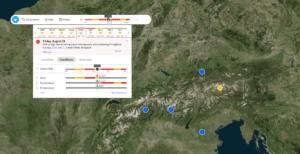
A view of weather conditions over Northern Italy, as seen in Weatherverse Planner. Color coding is based on set thresholds for each condition to help personnel more easily gain situational awareness of weather risk.
This incorporation of weather data from the world’s most accurate forecaster1 into SAF-FORESIGHT enables its seamless integration into planning and operational processes. Access to current weather conditions, forecasted conditions, summary dashboards and weather data allows for more interactive and intuitive visualizations, helping customers better understand and prepare for the actual effects of weather conditions on the safety and outcome of training exercises.
Weather conditions can affect a broad range of military operations, such as soldier deaths due to extreme heat or cold, littoral risks in high sea states, the dangers of low visibility and electrical activity on helicopter maneuver, misjudgment of tidal patterns on platform insertion, fire danger for high explosive munitions and severe injuries from parachuting in high winds.
“Globally, we’ve seen evidence of weather’s impact creating risks and ongoing dangers to personnel and platforms, in addition to the potential inability to conduct training in certain weather conditions leading to reduced military readiness,” said Dr. Adam Easton, CEO of SimCentric. “We continue to evolve and improve our world-class SAF-FORESIGHT technology, and working with The Weather Company helps us deliver to military planners and stakeholders practical tools that enable them to plan training effectively, mitigate key risks at a system level, and achieve the balance between realism and risk that all military training must resolve.”
SimCentric is working with The Weather Company to enhance safety in training by integrating reliable real-time weather data into SimCentric’s SAF-FORESIGHT live training safety software. This cooperation aims to leverage the innovation and leadership of both companies to facilitate a new range of holistic, system-level risk mitigation measures to be employed by users of SAF-FORESIGHT, a unique live training safety tool that ultimately strives to save lives and reduce injuries in training.
“As weather grows more disruptive and impactful on operational and planning requirements, it’s increasingly clear that leaders within the defense space require increasingly reliable, real-time weather intelligence,” said Sheri Bachstein, president of The Weather Company. “Cooperating with innovators like SimCentric and as part of the Talisman Sabre exercise has helped crystallize how critical it is to incorporate reliable, globally scaled weather data and insights into simulation environments such as defense planning and live training scenarios to help improve confidence in both decision making and outcomes.”
In addition to working with SimCentric, other defense industry leaders including many of the top prime contractors are actively exploring how best to leverage Weatherverse solutions to help improve the effectiveness of military planning, as well as live, virtual and constructive simulations. Users of Epic Games’ Unreal Engine for visual rendering can now leverage Weatherverse Sim as a plugin to integrate weather data into Unreal-powered simulation environments, whether offline or via API. Additionally, The Weather Company is working with NVIDIA to make Weatherverse capabilities also available on NVIDIA Omniverse,™ the platform for connecting and developing OpenUSD applications.
About SimCentric
SimCentric is a technology company focused on transforming training, safety and operational decision making through innovation. We develop commercial, off-the-shelf technology and strive to be thought leaders and innovators in the areas of: Joint Fires training, Range Safety, fratricide prevention, and Virtual Unreal Engine training environments. For more, visit simct.com.
About The Weather Company
The Weather Company helps people and businesses around the world make more informed decisions and take action in the face of weather. With its deep industry expertise and highly accurate, high-volume weather data combined with advanced technology and AI, The Weather Company provides insights and solutions that harness the power of weather in a scalable, privacy-forward way. The world’s most accurate forecaster, the company serves hundreds of enterprise customers across media, advertising, aviation and more, and is trusted by hundreds of millions of monthly active users via digital properties from The Weather Channel (weather.com) and Weather Underground (wunderground.com). For more, visit weathercompany.com.
1 ForecastWatch, Global and Regional Weather Forecast Accuracy Overview, 2017-2022, https://forecastwatch.com/AccuracyOverview2017-2022, commissioned by The Weather Company.





